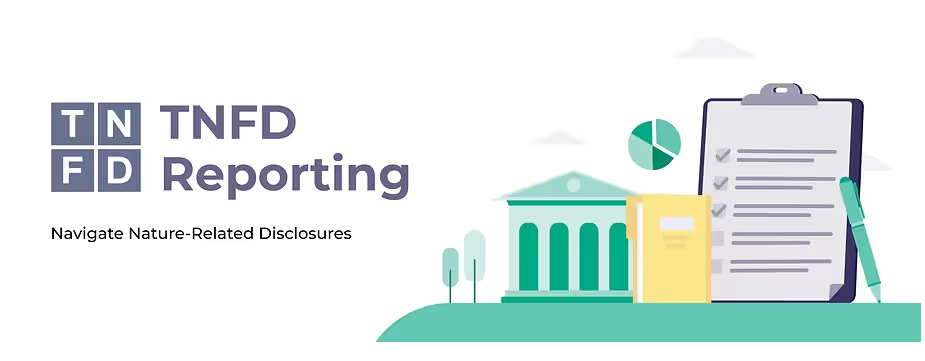
Solutions
Carbon Management
ESG Intelligence
Climate & Nature Risk
Data Registry
Beta
Sector
Get started, schedule a demo or request a free assessment!


ESG standards globally are rapidly evolving, with several multilateral, international organisations (e.g. ISSB, GRI, NGFS, PCAF, CDP), and states publishing frameworks. This has resulted in multiplicity of disclosure frameworks, with individual domestic jurisdictions also enacting multiple legislations. For example, India has the Business Responsibility and Sustainability Reporting Code, which overlaps with disclosures to/ under (inter alia) the Ministry of Corporate Affairs, the Pollution Control Board, the Sexual Harassment of Women at Workplace (Prevention, Prohibition and Redressal) Act.
The multiplicity of compliance burdens requires detangling and streamlining, and a few methods are currently employed. GRI, for example, permits a disclosing entity to cross-reference reports that contain the relevant information. However, this doesn’t solve for the multiplicity of reporting framework structures and underlying metrics for data collected. It’s important to incorporate interoperability at the inception stage to ensure disclosures are tightly integrated.
In this context, multilaterals are increasingly collaborating with each other and with states to ensure cohesion from the grounds up. SASB/ IFRS, GRI and CDP are harmonising their standards. Domestic disclosure regulations are globally adopting the IFRS S2/ TCFD standards - for example, Japan, Singapore, and India are basing their financial disclosures on the four pillars established by the TCFD (strategy, governance, risk management, and targets and metrics).
The Taskforce on Nature-related Financial Disclosures is in many ways the successor of the TCFD. With the benefit of hindsight, the TNFD has collaborated extensively with multilaterals and regulators, including with the EFRAG, to ensure grounds-up interoperability as far as practicable. The TNFD and the EFRAG worked closely for two years to harmonise disclosure requirements and jointly published a ‘mapping of correspondences’ between the European Sustainability Reporting Standards and the TNFD’s recommended disclosures and metrics. The TNFD and the EFRAG also signed a Memorandum of Understanding in December, 2023, to extend their collaboration and be responsive to the responses and guidance needs of disclosers.
The joint publication demonstrated that all 14 recommended disclosures of TNFD are mapped to the ESRS. It is intended to provide a reference point for entities obligated to disclose under the Corporate Sustainability Reporting Directive as well.
1. Concepts and definitions: Both disclosure standards recommend 14 disclosures on nature-related impacts, risks and opportunities, and dependencies on nature (at least to the extent that they generate material risks)
2. Approach to materiality: The ESRS requires disclosures based on double materiality. While double materiality is acceptable under the TNFD, there are alternative approaches that can be adopted instead.
3. The LEAP approach: The LEAP approach (Locate, Evaluate, Assess, Prepare) was developed by the TNFD as a framework of implementation for market participants, enabling them to evaluate impact and financial materiality (at the end of the ‘Evaluate’ and ‘Assess’ stages respectively). The ESRS confirms this approach, by enabling disclosers to adopt the LEAP approach for materiality assessment of pollution, water, biodiversity and ecosystems, and circular economy. That said, there are some differences - the terminology, definitions, granularity, and disclosure requirements are not identical.
4. Reporting pillars: Both standards have adopted the TCFD’s four-pillar structure of Governance, Strategy, Risk Management, and Metrics and Targets.
As overall guidance for the 14 metrics mentioned below, the enterprise has to disclose:
1. It’s approach to materiality and relevant frameworks/ regulations it has referred to.
2. The scope of its disclosures (reporting boundary, value chain coverage) and references to the framework these relate to
3. Dependencies and impacts on nature, including key risks and opportunities
4. Locations where the enterprise interacts with nature
5. How the TNFD framework is being incorporated into other sustainability initiatives and disclosures, including key alignments and trade-offs.
6. Stakeholder engagement
As is evident, global regulations are developing in an intentionally coterminous manner. This should significantly relieve compliance burden and costs. Additionally, organisations that are voluntarily reporting on TNFD are developing internal data systems in advance and progressively improving their quality of reporting. Solutions in the space are very early but growing, given the complexity of the matrics sought to be measured. We believe the Indian regulatory system will adopt nature-related disclosures soon, and early and proactive disclosers stand to benefit by future-proofing their businesses from regulatory disruption.

.svg)